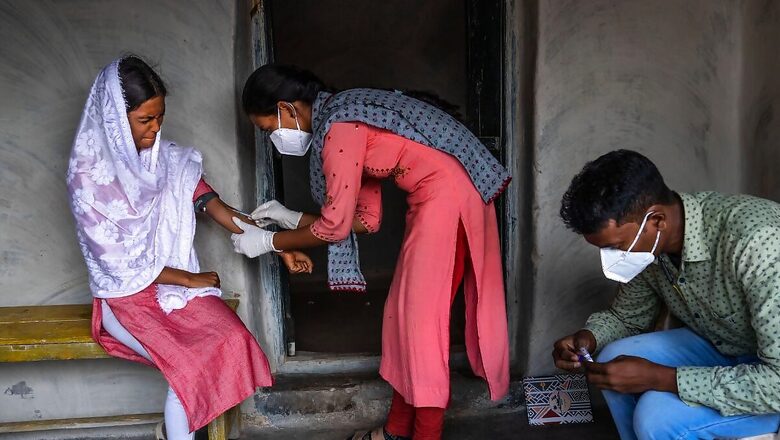
views
Sickle cell disease is eleven times more deadly than previously recorded levels, a new study has found. Between 2000 and 2021, national incidence rates were relatively stable but total births with the genetic blood disorder increased globally by 13.7 percent.
Sickle cell anaemia affects the red blood cells (RBC) and turns them from round flexible discs into stiff and sticky sickled cells. Due to this, the body is unable to carry adequate oxygen to the tissues. Close to 80 lakh people suffer from the hereditary disease, which disproportionately impacts children, adolescents and young adults.
Published in The Lancet Haematology on Thursday, the study showed a strikingly high contribution of sickle cell disease (SCD) to all-cause mortality, which is not apparent when each death is assigned to only a single cause. The previous global analyses – relying on single cause per death attribution systems – provides only a small insight into the suspected high population health effect of sickle cell disease.
A new analysis provides a picture of sickle cell disease mortality burden by combining disease prevalence data across different age groups and trends in overall survival, when factoring in resulting secondary conditions.
“When looking across all deaths, sickle cell disease is a leading cause of mortality in children under five years as well as in youth aged 5 to 14 and adults aged 15 to 49,” the study said.
79% infants born with SCD in sub-Saharan Africa
The study of prevalence of sickle cell disease and mortality burden – by age and sex for 204 countries and territories from 2000 to 2021 – found that “half a million babies were born with the disease in 2021, and 79 percent of these infants were in sub-Saharan Africa”.
“The largest increases in total deaths due to sickle cell disease since 2000 were in South Asia and sub-Saharan Africa, with the rise driven by population growth,” the study stated.
Researchers found that the number of people living with sickle cell disease globally increased by 41.4 percent, from 54.6 lakh in 2000 to 77.4 lakh in 2021. “We estimated 34,400 cause-specific all-age deaths globally in 2021, but the total sickle cell disease mortality burden was nearly 11 times higher at 3,76,000,” the study said.
“In children younger than five years, there were 81,100 deaths, ranking total sickle cell disease mortality as 12th (compared to 40th for cause-specific sickle cell disease mortality) across all causes estimated by the Global Burden of Diseases, Injuries, and Risk Factors Study (GBD) in 2021,” it added.
Strategies needed immediately
The study, however, concludes that data gaps and high burden in regions with historically elevated rates of sickle cell disease highlight the urgent need for universal newborn screening systems and increased access to treatment.
“Our findings show a strikingly high contribution of sickle cell disease to all-cause mortality that is not apparent when each death is assigned to only a single cause,” the study stated.
It warned that without comprehensive strategies to address morbidity and mortality associated with sickle cell disease, attainment of sustainable development goals (SDG) is uncertain.
“Widespread data gaps and correspondingly high uncertainty in the estimates highlight the urgent need for routine and sustained surveillance efforts, further research to assess the contribution of conditions associated with sickle cell disease, and widespread deployment of evidence-based prevention and treatment…” it stated.
















Comments
0 comment